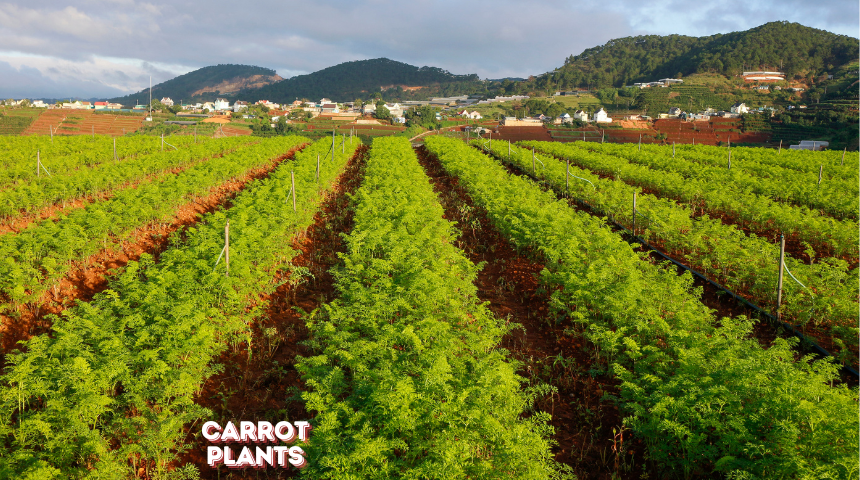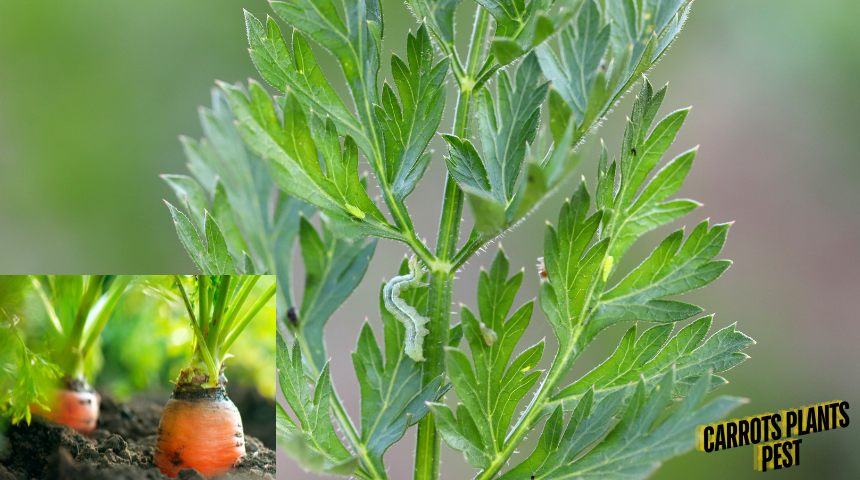Welcome to my gardening guide on How Do I Grow Carrots? As an avid gardener and expert, I’m excited to share insights on cultivating these crunchy delights.
Carrots are versatile vegetables packed with nutrients and flavor, making them a must-have in any garden. From choosing the right variety to nurturing them to maturity, I’ll cover every step of the journey.
With a bit of patience and care, you’ll soon be harvesting your own vibrant carrots straight from the soil. Let’s dive in and uncover the secrets to successful carrot cultivation.
Whether you’re a seasoned gardener or a beginner, this guide will equip you with the knowledge to grow carrots like a pro. So, roll up your sleeves, grab your gardening tools, and let’s get started on this carrot-growing adventure!
How Do I Grow Carrots?
To grow carrots, start by choosing a sunny spot in your garden with well-drained soil. Make sure the soil is loose and free from rocks to allow the carrots to grow straight.
Sow carrot seeds about ½ inch deep and 1 inch apart in rows. Keep the soil moist but not waterlogged during germination. Thin the seedlings to about 2-3 inches apart once they reach a few inches tall.
Mulch around the plants to retain moisture and suppress weeds. Water the carrots regularly, ensuring the soil remains consistently moist.
Fertilize the carrots lightly with a balanced fertilizer about 4-6 weeks after planting. Harvest your carrots when they reach the desired size, typically 60-80 days after planting. Enjoy the fresh, homegrown taste of your carrots straight from the garden!
THE BEST 10 AMAZING WAYS FOR “HOW DO I GROW CARROTS?”
1. Choosing the Right Variety:
Selecting the appropriate carrot variety is essential for a successful harvest. Consider factors such as taste preference, soil type, and growing conditions.
For instance, if you have heavy soil, opt for shorter varieties like ‘Nantes’ that are better suited to compacted soil. On the other hand, if you have loose, sandy soil, ‘Imperator’ varieties may thrive due to their longer root growth.

2. Preparing the Soil:
Prepare your soil diligently to create an optimal environment for carrot growth. Start by loosening the soil to a depth of at least 12 inches, removing any rocks, clumps, or debris that could hinder root development.
Incorporate organic matter such as compost or well-aged manure to improve soil structure and fertility. Aim for a fine, crumbly texture that allows for easy penetration of carrot roots.
3. Planting Depth and Spacing:
The depth at which you plant carrot seeds directly impacts their germination and subsequent growth. Sow seeds approximately ½ inch deep in well-prepared soil, ensuring they are evenly spaced within rows.

Aim for a spacing of around 2-3 inches between each seed to prevent overcrowding and competition for nutrients as they mature. Consistent spacing facilitates proper root development and allows for easier thinning later on.
4. Watering Techniques:
Watering is critical, especially during the early stages of carrot growth. Keep the soil consistently moist but not waterlogged to facilitate germination and seedling establishment.
Watering deeply and infrequently encourages the development of strong root systems, while shallow, frequent watering can lead to shallow root growth and increased susceptibility to drought.
Monitor soil moisture regularly and adjust the watering frequency as needed to maintain optimal conditions.
5. Mulching Benefits:
Mulching offers numerous benefits for carrot cultivation. A layer of organic mulch, such as straw or shredded leaves, helps conserve soil moisture by reducing evaporation and suppressing weed growth.
Additionally, mulch acts as insulation, regulating soil temperature and protecting delicate carrot roots from temperature fluctuations.
As the mulch decomposes, it also enriches the soil with valuable organic matter, further enhancing fertility and overall soil health.
6. Thinning for Success:
Thinning is a crucial step in carrot cultivation that ensures proper spacing and encourages robust growth. Once carrot seedlings have emerged and developed their first true leaves, thin them to achieve the desired spacing outlined earlier.
Carefully remove weaker or overcrowded seedlings, leaving behind only the healthiest individuals. Thinning allows remaining carrots to access ample nutrients, sunlight, and water, resulting in stronger, more vigorous plants and higher yields at harvest.
7. Pest and Disease Management:
Carrots are susceptible to various pests and diseases that can impact their growth and yield. Common pests include carrot rust flies, aphids, and nematodes, while diseases such as carrot root rot and leaf blight can also pose significant challenges.

Implement proactive pest and disease management strategies, such as crop rotation, companion planting, and regular inspection for signs of infestation or infection.
Consider using organic pest control methods, such as insecticidal soaps or neem oil, to minimize chemical exposure and preserve beneficial insects.
8. Fertilizing Techniques:
While carrots are not heavy feeders, they still benefit from adequate nutrition throughout the growing season. Before planting, incorporate a balanced fertilizer or compost into the soil to provide essential nutrients for early growth.
During the growing season, side-dress carrots with a nitrogen-rich fertilizer or compost to support continued development.
Avoid excessive fertilization, as it can lead to lush foliage at the expense of root development and may result in misshapen or forked carrots.
9. Harvesting Tips:
Knowing when and how to harvest carrots is essential to ensure optimal flavor, texture, and storage life. Carrots are typically ready for harvest 60-80 days after planting, depending on the variety and growing conditions.
Look for signs of maturity, such as vibrant color, firm texture, and a diameter of ½ to 1 inch. Gently loosen the soil around the base of the carrot before carefully pulling it out by grasping the foliage near the top.
Avoid damaging the delicate roots or causing unnecessary bruising during harvest to preserve quality.
10. Storage and Preservation:
Proper storage and preservation techniques help prolong the shelf life and maintain the quality of harvested carrots.
After harvesting, remove any excess soil and trim the foliage to about an inch above the crown. Store carrots in a cool, humid environment, such as the refrigerator crisper drawer or a root cellar, to slow moisture loss and prevent wilting.

Alternatively, consider preserving carrots through freezing, canning, or pickling to enjoy their fresh flavor and nutritional benefits year-round.
HOW LONG DOES IT TAKE CARROTS TO GROW?
Carrots typically take about 60 to 80 days to reach maturity from the time they are planted as seeds. However, the exact time may vary depending on factors such as the carrot variety, growing conditions, and climate.
Some fast-maturing varieties may be ready for harvest in as little as 50 days, while larger or longer varieties may require up to 90 days or more to fully mature.
It’s essential to monitor the progress of your carrots regularly and harvest them when they reach the desired size and color for optimal flavor and texture.
FAQ
How deep should I plant carrot seeds?
Plant carrot seeds about ½ inch deep in loose, well-drained soil.
Do carrots need full sun to grow?
Yes, carrots thrive in full sun, which means they need at least 6-8 hours of direct sunlight daily.
How often should I water carrot plants?
Water carrot plants regularly to keep the soil consistently moist, especially during germination and hot, dry weather.
When should I thin my carrot seedlings?
Thin carrot seedlings once they reach a few inches tall, leaving about 2-3 inches of space between plants for proper growth.
How do I know when carrots are ready to harvest?
Carrots are typically ready to harvest 60-80 days after planting. Look for vibrant color, firm texture, and a diameter of ½ to 1 inch as signs of maturity.
CONCLUSION
In conclusion, growing carrots is a rewarding and fulfilling experience that anyone can enjoy. By following the steps outlined in this guide, you’ll be well-equipped to cultivate your own delicious carrots right in your backyard.
Remember to choose the right variety, prepare your soil diligently, and provide proper care throughout the growing season.
With patience, dedication, and a little bit of know-how, you’ll soon be harvesting crisp, flavorful carrots to enjoy fresh or preserved for later. Happy gardening, and may your carrot patch be abundant and thriving!



